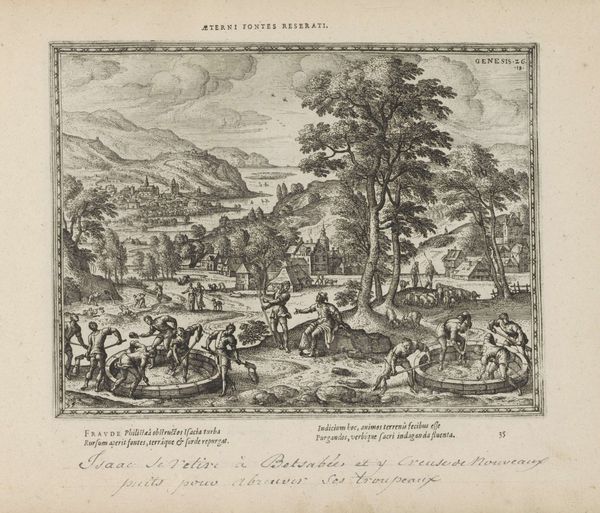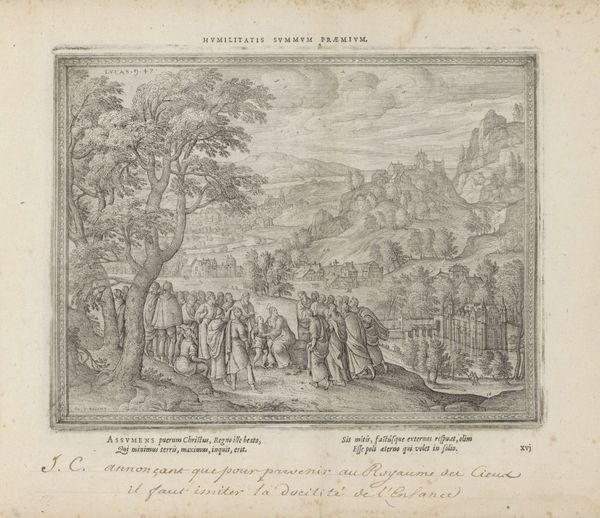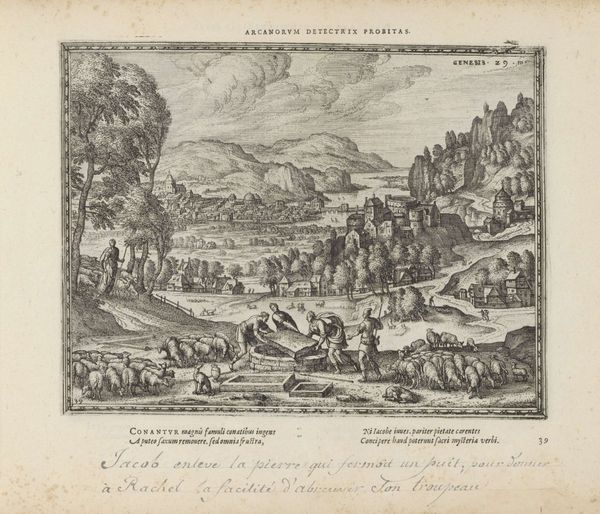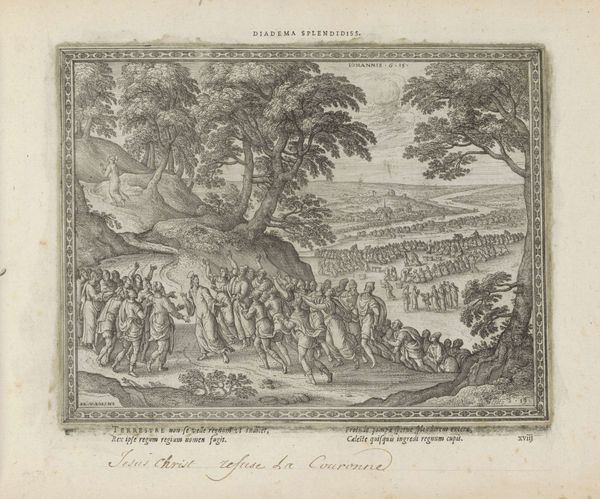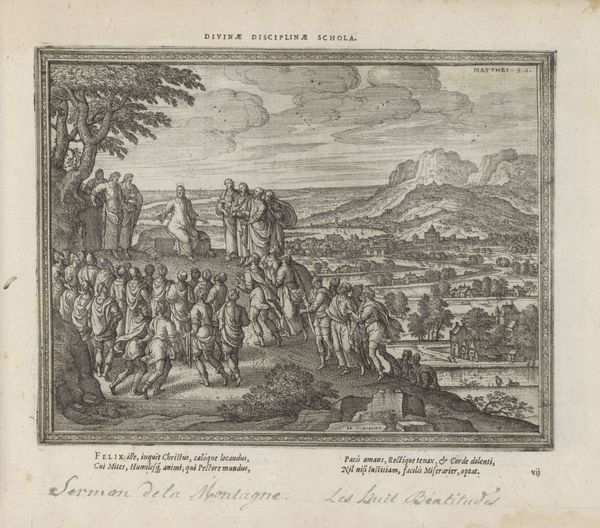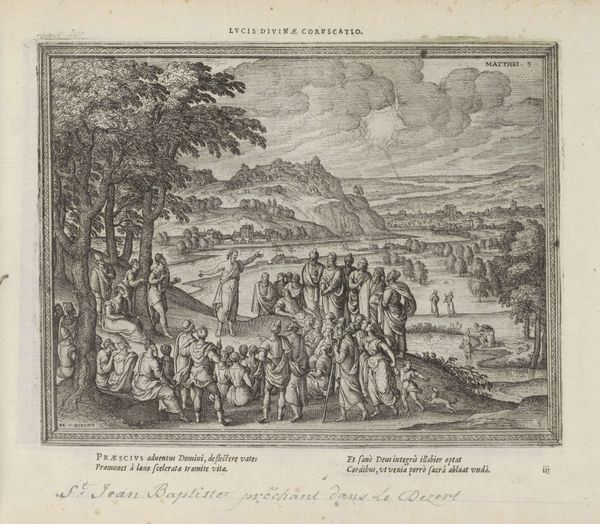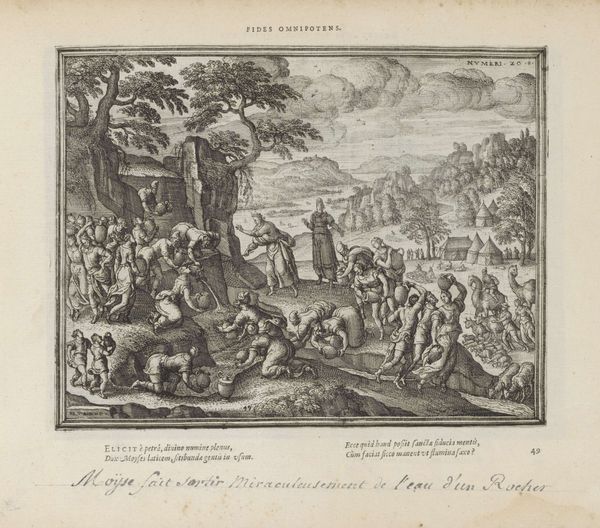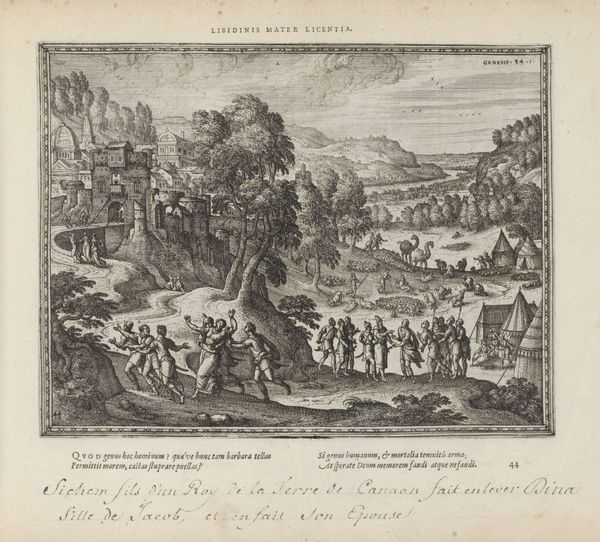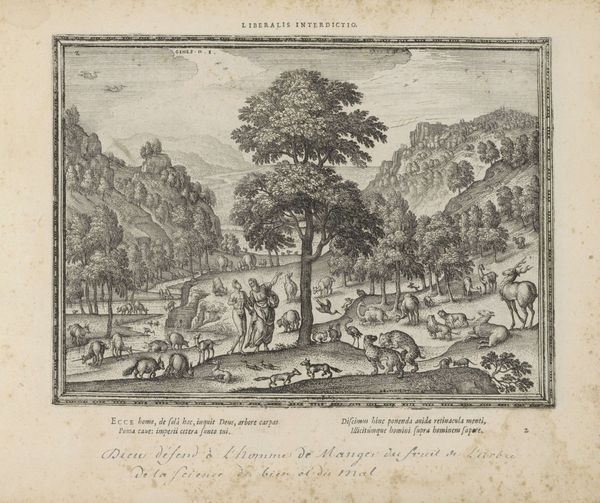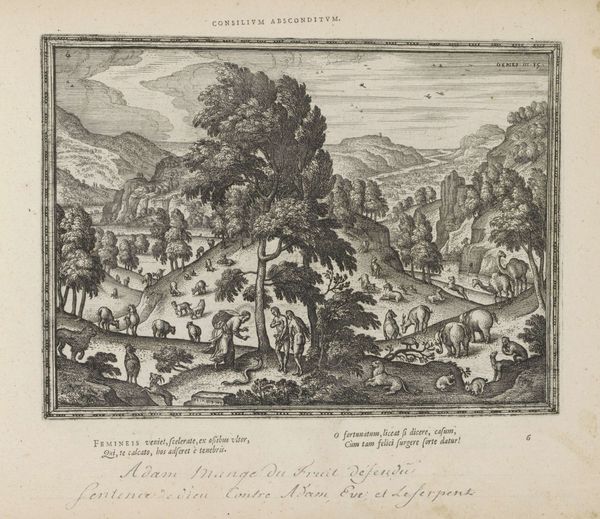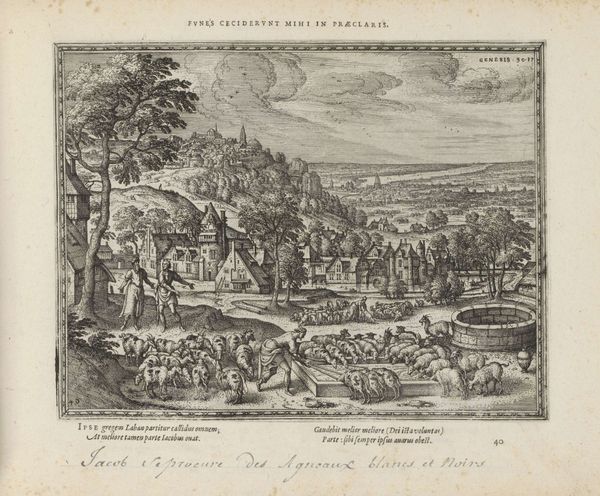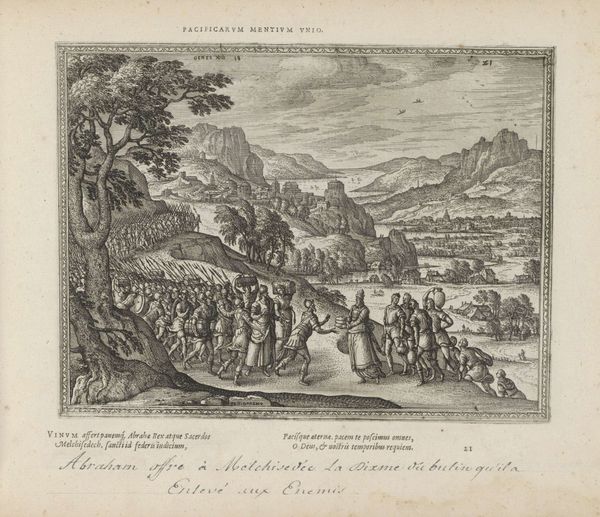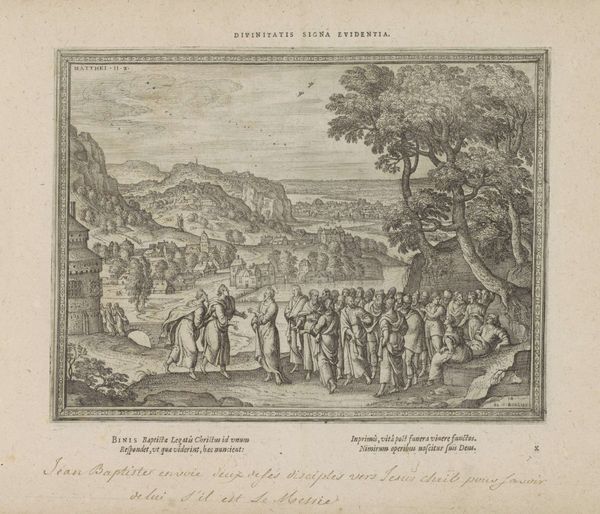
engraving
#
baroque
#
old engraving style
#
genre-painting
#
history-painting
#
engraving
Dimensions: height 184 mm, width 241 mm
Copyright: Rijks Museum: Open Domain
Editor: Here we have "The Adoration of the Golden Calf," an engraving by Pieter van der Borcht, made sometime between 1582 and 1613. Looking at the throng of people dancing around this… idol, there's a frantic energy that feels almost panicked. What strikes you most about it? Curator: The real emotional weight, for me, lies in understanding the symbols and imagery chosen here. Note the 'MULTITUDO INSOLENS' inscription. It speaks volumes about the engraver's view. Doesn't it conjure a sense of societal collapse, a departure from order and reason? Consider what the Golden Calf represented to the Israelites: a tangible, immediate object of worship in place of an abstract, demanding God. It’s about trading long-term spiritual gains for immediate, hedonistic gratification. Editor: So the calf itself isn't just an idol, it represents a larger societal failing? Curator: Precisely. And the act of adoration—the dancing, the revelry—it signifies a collective lapse in judgment, a succumbing to base desires. Think of the recurring symbols of idolatry across cultures: the blurring lines between the sacred and profane, the surrender of individual agency to a group mentality. Does the image invite us to think about the nature of leadership? About the vulnerability of any community when faced with temptation? Editor: That really shifts my perspective. I was initially just seeing a chaotic scene, but now I see layers of meaning relating to cultural anxieties around faith and authority. Curator: And that, ultimately, is the enduring power of imagery. It invites us to decipher not just what we see, but what it means within the wider context of human experience. It holds a cultural memory. Editor: Thank you. I'm definitely seeing more than I did at first glance.
Comments
No comments
Be the first to comment and join the conversation on the ultimate creative platform.
